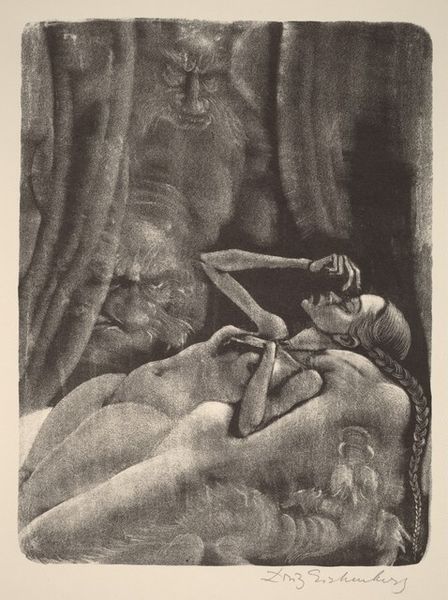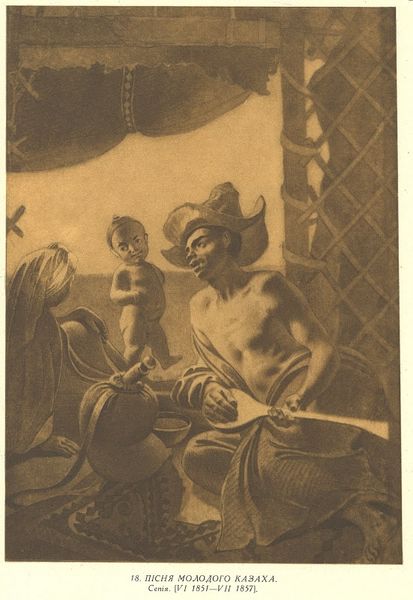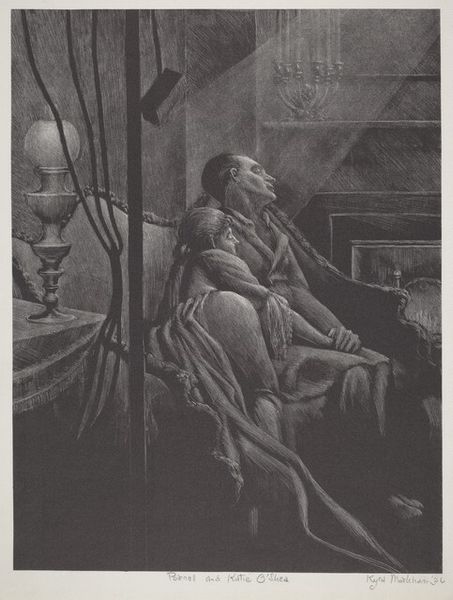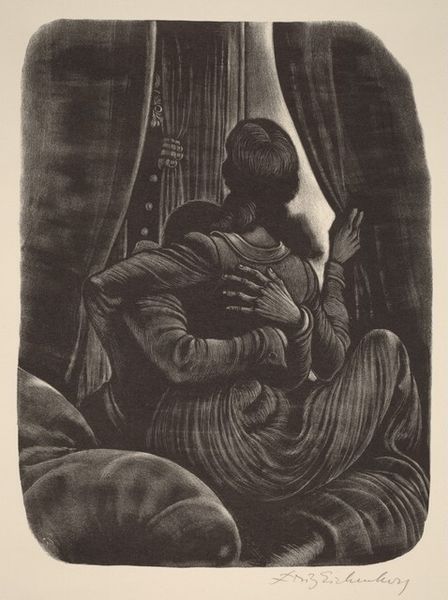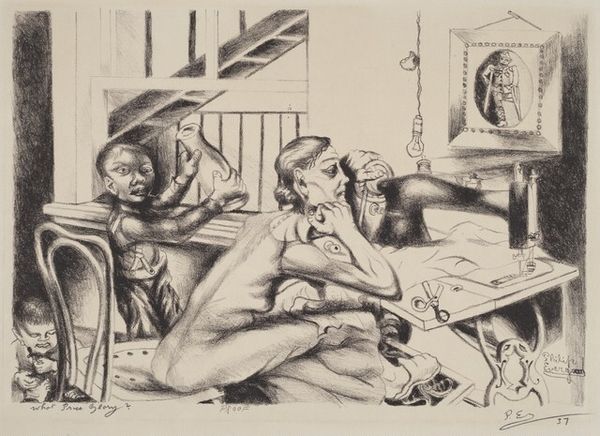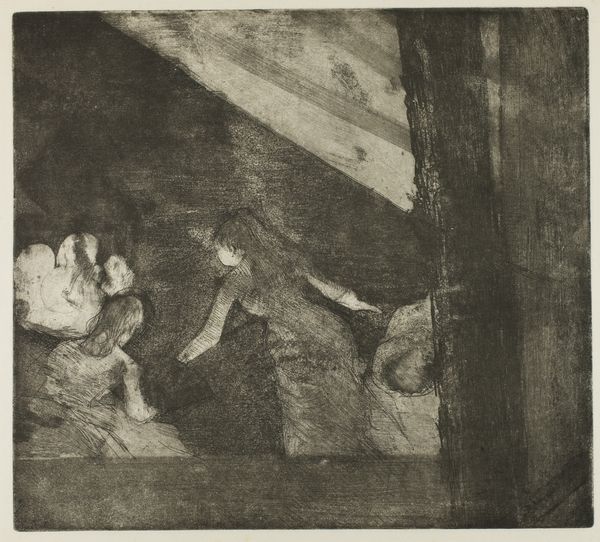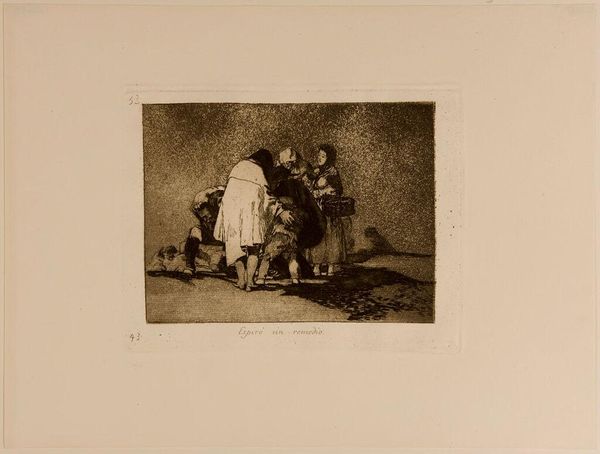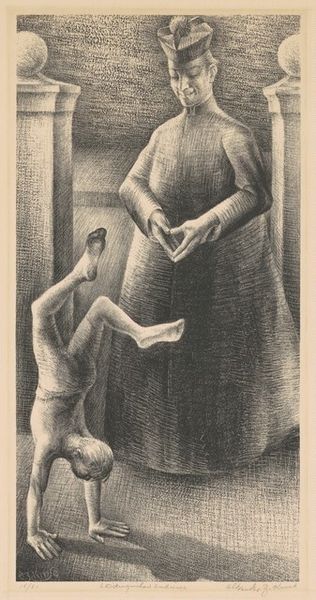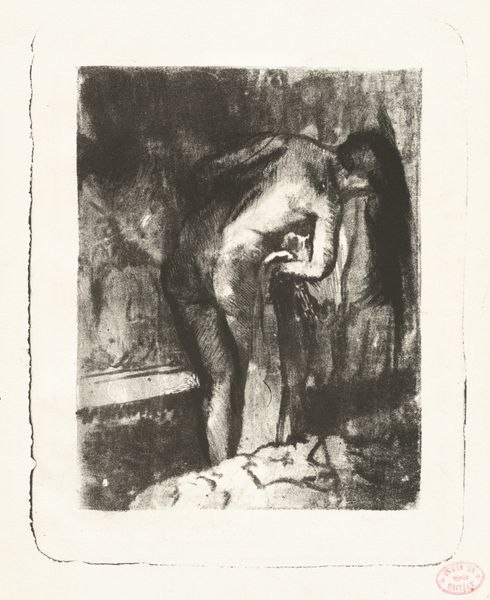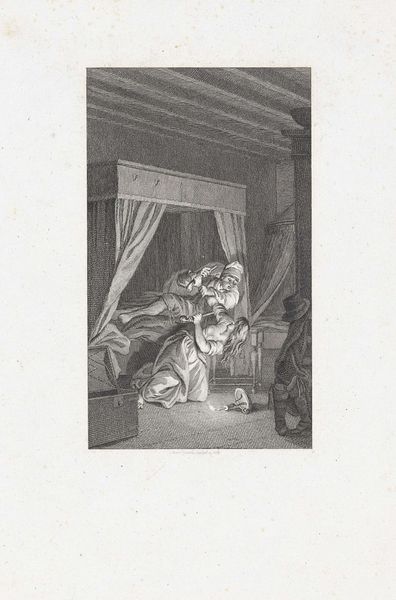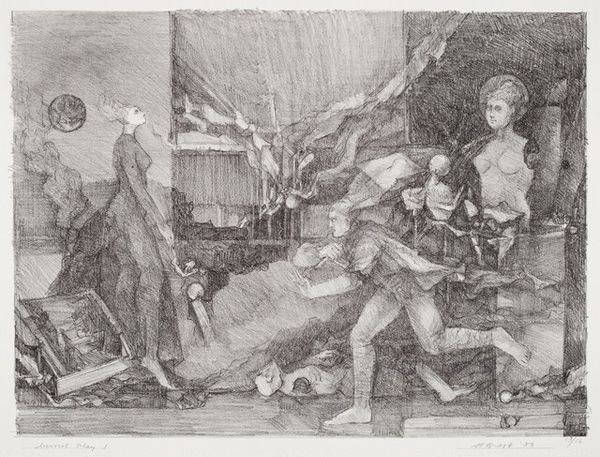
drawing, print, pencil, graphite, charcoal
#
drawing
# print
#
landscape
#
charcoal drawing
#
figuration
#
pencil drawing
#
pencil
#
graphite
#
genre-painting
#
charcoal
#
charcoal
#
graphite
#
modernism
#
realism
Dimensions: image: 246 x 349 mm sheet: 302 x 408 mm
Copyright: National Gallery of Art: CC0 1.0
Curator: Immediately, the raw, almost desperate, tenderness of the children is what strikes me. It’s as if they are shielding each other not just physically but emotionally, too. Editor: Let's explore Bernard Joseph Steffen's 1939 drawing and print titled "Suffer Little Children". Executed in graphite and charcoal, it is a poignant piece that demands our attention, especially considering the historical context in which it was created. Curator: Context is everything here, isn't it? Considering that 1939 marks the beginning of World War II, one can't help but consider what narratives and what realities the drawing responds to. I am also curious to ask, were children viewed as symbols of innocence during the years leading up to World War II, and were artists making works dedicated to child-centered narratives as a result of that perceived innocence? The work speaks to a historical moment ripe with growing anxieties around gender and power and their violent collapse onto the lives of children in war. Editor: Absolutely, and the broken arches, rubble, and aircraft subtly placed in the upper left seem to symbolize destruction of family, and the future and innocence itself. And if you focus on it, the gesture of the girl to the right feels maternal as the smaller child buries his head into her legs. There is the universal symbol of protection, maybe? I wonder, are they related in some way? There is this beautiful melancholic light illuminating the subjects in such stark tonality as if a divine entity of some kind is looking over them. The children are literally posed against a cataclysmic ruin as if the ruin itself might have a message for our children about trauma and generational passage. Curator: Yes, trauma is palpable. The children are set against a war-torn backdrop, seemingly indifferent, and isolated from their external world. They represent larger themes of violence against women and children. In response to a rise in the targeting and displacement of women and children through the war, there seems to be an increase of women making works and forming collectives for peace. This piece asks, what historical forces of pre-war conflict in Europe can provide insights into this work by Steffen and similar pieces coming out of WWII? It reminds me of Kathe Kollwitz. Editor: You're right, the echo of Kollwitz's explorations of maternal grief certainly reverberates here. This graphite and charcoal work possesses a staying power – these symbols endure through time. It gives us so much to think about concerning cultural anxieties then and today. Curator: Indeed, these interwoven narratives resonate powerfully, and perhaps encourage action, change and healing from these transgenerational traumas that mark our history.
Comments
No comments
Be the first to comment and join the conversation on the ultimate creative platform.
